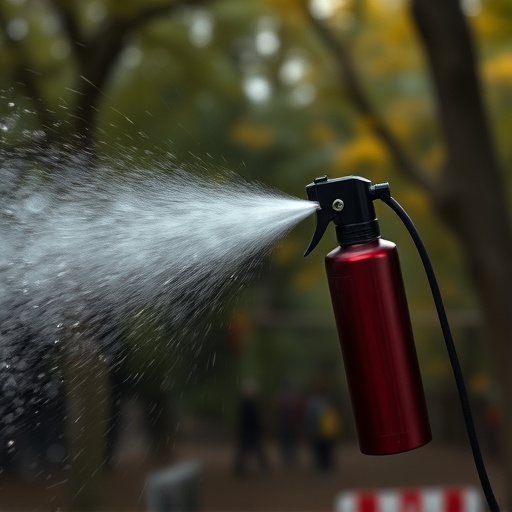TL;DR:
Use pepper spray responsibly by immediately flushing eyes with clean, cool water for 15 minutes after exposure to dilute and wash away irritants. This vital step prevents severe irritation and potential long-term damage. Familiarize yourself with local laws regarding pepper spray carrying and usage. Seek medical attention if symptoms persist or vision is affected.
In today’s world, personal protection devices like pepper spray are essential tools for self-defense. This article delves into the critical role of chemical irritants in enhancing individual safety. We’ll explore how pepper spray, a common irritant, works and its composition. Additionally, we’ll discuss eye washing procedures after exposure to these agents, emphasizing swift action for safe protection. Understanding these components is vital for effective personal defense and immediate response to potential threats, especially when combined with proper safety measures.
- Understanding Chemical Irritants and Their Role in Personal Protection
- Pepper Spray: Composition, Functionality, and Safety Measures
- Eye Washing Procedure After Exposure to Chemical Irritants
Understanding Chemical Irritants and Their Role in Personal Protection
Chemical irritants play a crucial role in personal protection devices, particularly pepper spray, by providing individuals with an effective means of self-defense against potential threats. These substances are designed to temporarily incapacitate or deter attackers, giving users valuable time to escape dangerous situations. Pepper spray, for instance, contains capsaicin, the active ingredient found in chili peppers, which triggers a burning sensation and inflammation when it comes into contact with the eyes, skin, and respiratory system.
Understanding how chemical irritants work is essential when considering their application in eye-washing procedures. In cases where pepper spray is used, immediate and thorough eye washing is recommended to alleviate discomfort and prevent long-term damage. The eye washing procedure involves flushing the eyes with large amounts of clean water for at least 15 minutes to dilute and wash away the irritant. This step is vital to ensure that no residue remains, which could potentially cause continued irritation or even chemical burns.
Pepper Spray: Composition, Functionality, and Safety Measures
Pepper spray is a common chemical irritant used in personal protection devices, designed to incapacitate an attacker temporarily. Its composition typically includes capsaicin, the active ingredient found in chili peppers, along with various other chemicals and carriers. When deployed, pepper spray causes irritation to the eyes, nose, throat, and skin, leading to temporary blindness and difficulty breathing, thereby allowing the user to escape or seek help.
The functionality of pepper spray relies on its ability to disrupt normal cellular functions through the stimulation of nerve endings. While it is generally safe when used responsibly, proper safety measures must be observed. This includes understanding the eye washing procedure after exposure, as getting pepper spray in the eyes can cause severe irritation and potential damage. Immediate eye washing with plenty of clean water for at least 15 minutes is recommended to flush out the irritants and alleviate symptoms. Users should also ensure they are familiar with local regulations regarding the carrying and use of pepper spray to avoid legal repercussions.
Eye Washing Procedure After Exposure to Chemical Irritants
In the event of exposure to a chemical irritant, such as pepper spray, immediate and proper eye washing procedure is crucial for personal protection. The first step is to move the affected individual to a safe, designated area away from the source of the irritant. Next, gently flush both eyes with clean, cool water for at least 15 minutes. Hold the eyelids open using one hand while pouring or directing a steady stream of water across the eye surface, ensuring thorough irrigation.
For pepper spray, which often leaves a burning sensation and visual impairment, this method helps to dilute and wash away the irritant chemicals. It’s important to ensure that the water is not too hot, as it could further irritate the eyes. After flushing, seek medical attention if symptoms persist or if any vision loss occurs, as professional care may be required to address potential long-term effects from chemical exposure.
Chemical irritants play a crucial role in personal protection devices like pepper spray, which has established itself as an effective deterrent. Understanding these substances and proper eye washing procedures after exposure is essential for ensuring safety. Pepper spray, with its unique composition, offers immediate functionality to disable assailants. However, knowing the right eye washing procedure afterward is vital to mitigate any adverse effects. By combining awareness of chemical irritants and adhering to recommended eye washing practices, individuals can effectively protect themselves in potentially hazardous situations.
